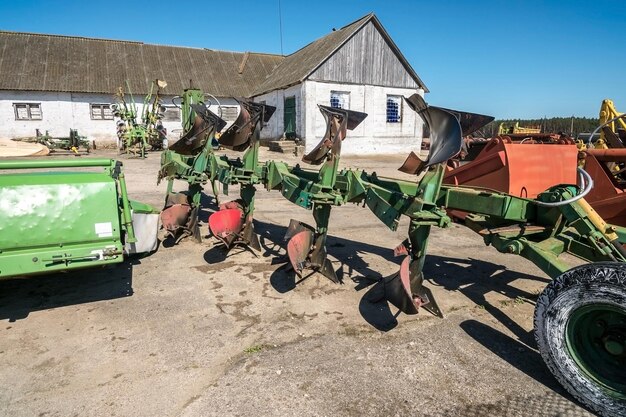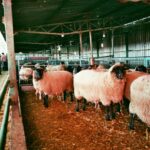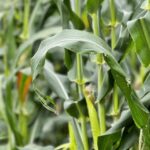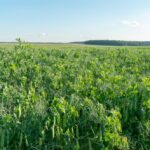Modern farming relies heavily on efficiency and precision, and one of the best ways to achieve these goals is by utilizing tractor attachments and implements. These tools enhance the versatility of tractors, allowing farmers to perform a wide range of tasks more effectively. From tillage and planting to harvesting and maintenance, the right attachments can significantly boost farm productivity while reducing labor and costs.
The Role of Tractor Attachments in Farming
Tractor attachments and implements are specialized tools designed to handle specific farming tasks. By coupling these tools with a tractor, farmers can mechanize time-consuming processes, improve work efficiency, and increase overall yields. They also help optimize resource use, such as fuel, water, and labor, making them indispensable for modern agriculture.
Essential Tractor Attachments and Their Benefits
1. Plows
Plows are essential for primary tillage, breaking up compacted soil and preparing fields for planting. Moldboard, disc, and chisel plows are common options, each suited for specific soil types and farming needs. Proper plowing improves soil aeration, enhances water infiltration, and helps manage weeds.
2. Harrows
Harrows are used for secondary tillage to level the soil, break up clods, and create a fine seedbed. Disc harrows and tine harrows are popular choices that ensure optimal conditions for planting, promoting better seed-to-soil contact and germination rates.
3. Seeders and Planters
Seeders and planters automate the sowing process, ensuring uniform seed placement and spacing. This precision reduces seed waste, improves germination rates, and promotes healthier crop growth. Modern seeders often include features for applying fertilizer simultaneously, further boosting efficiency.
4. Fertilizer Spreaders
Fertilizer spreaders distribute nutrients evenly across the field, ensuring crops receive the essential elements they need for growth. Using a spreader saves time compared to manual application and ensures consistent coverage, reducing the risk of over- or under-fertilization.
5. Sprayers
Sprayers are essential for applying pesticides, herbicides, and fertilizers to crops. Boom sprayers cover large areas efficiently, while smaller spot sprayers are ideal for targeted applications. Modern sprayers often feature GPS-guided systems for precise application, minimizing waste and environmental impact.
6. Mowers and Cutters
Mowers and cutters help manage vegetation, including hay harvesting and pasture maintenance. Rotary cutters, flail mowers, and sickle bar mowers are common options. These attachments ensure efficient cutting, reduce manual labor, and maintain fields in optimal condition.
7. Balers
Balers are vital for farmers who grow hay, straw, or other forages. Round and square balers compress harvested materials into compact bales, making them easier to transport and store. This mechanization saves time and labor while preserving forage quality.
8. Front-End Loaders
Front-end loaders are versatile attachments for tasks such as lifting, moving, and loading materials like soil, manure, or hay. Equipped with buckets, forks, or grapples, they simplify heavy-duty tasks and enhance farm operations.
9. Backhoes
Backhoe attachments are ideal for digging trenches, ditches, or foundations. They are particularly useful for installing irrigation systems, repairing drainage, or constructing farm infrastructure.
10. Trailers
Trailers simplify the transportation of goods, tools, and harvested crops around the farm. They improve logistics, reduce manual hauling, and save time during busy harvest seasons.
11. Post Hole Diggers
Post hole diggers streamline the installation of fences or poles, saving significant time and effort compared to manual digging. These attachments are especially useful for livestock farmers needing to maintain secure enclosures.
How to Choose the Right Tractor Attachments
Selecting the right attachments depends on various factors, including farm size, crop type, and specific operational needs. Here are some tips for making the best choice:
- Assess Farm Requirements: Identify the tasks that require mechanization, such as plowing, planting, or harvesting. Choose attachments that address these needs directly.
- Consider Compatibility: Ensure the attachments are compatible with your tractor’s size, horsepower, and hitch type.
- Focus on Quality: Invest in durable, high-quality equipment to minimize downtime and maintenance costs.
- Plan for Versatility: Opt for multi-functional attachments that can handle multiple tasks, maximizing their utility.
Maximizing Productivity with Attachments
To get the most out of your tractor attachments, follow these best practices:
- Proper Maintenance: Regularly inspect and maintain attachments to ensure optimal performance and longevity. Clean and lubricate moving parts, check for wear and tear, and replace damaged components promptly.
- Train Operators: Provide training for equipment operators to ensure safe and efficient use of attachments. Proper handling reduces the risk of accidents and extends the lifespan of the tools.
- Optimize Timing: Use attachments during the appropriate season or growth stage to maximize their impact on productivity. For example, plant seeders during the planting window and harvesters at peak maturity.
- Adopt Precision Agriculture: Modern implements with GPS and sensors enhance precision and efficiency, allowing farmers to reduce waste and improve yields.
Tractor attachments and implements are transformative tools for enhancing farm productivity. By streamlining operations, reducing labor, and improving resource efficiency, these tools help farmers meet the demands of modern agriculture. Investing in the right equipment and maintaining it properly ensures long-term success, empowering farmers to increase yields, reduce costs, and operate more sustainably.
Join 'Farmers Mag' WhatsApp Channel
Get the latest Farming news and tips delivered straight to your WhatsApp
CLICK HERE TO JOIN






